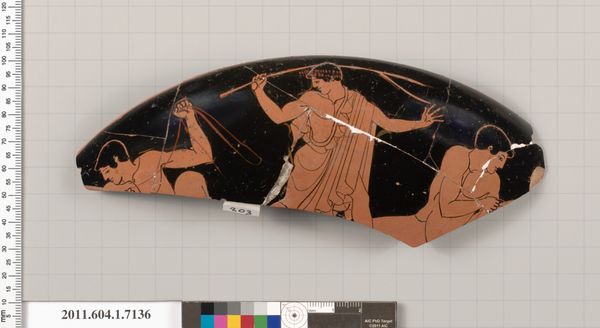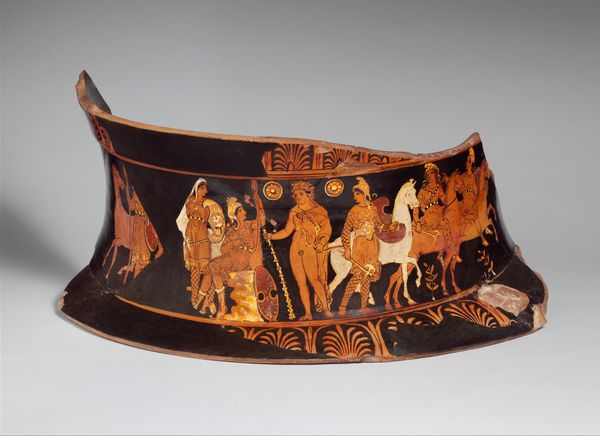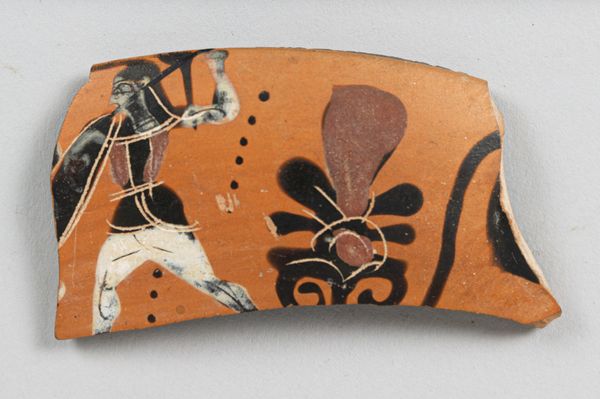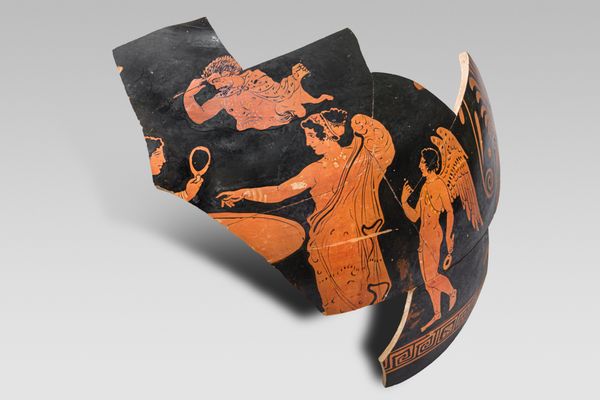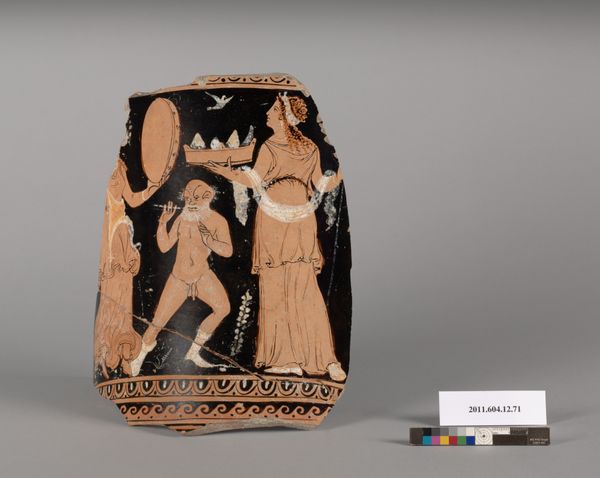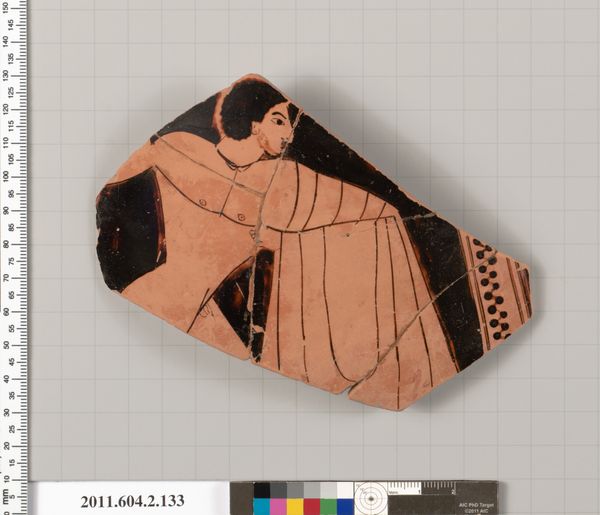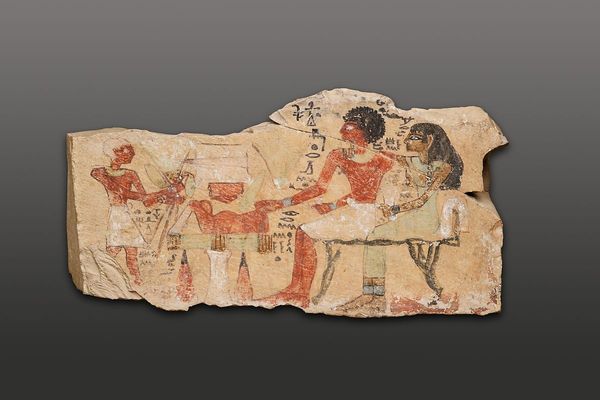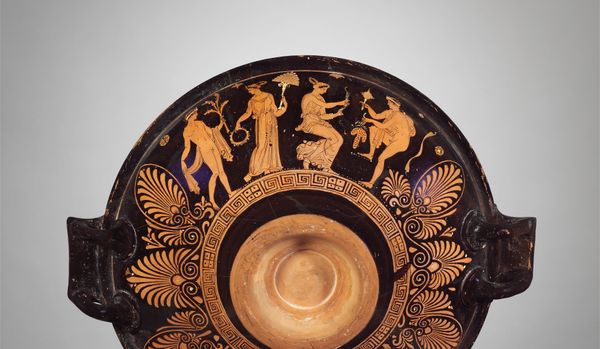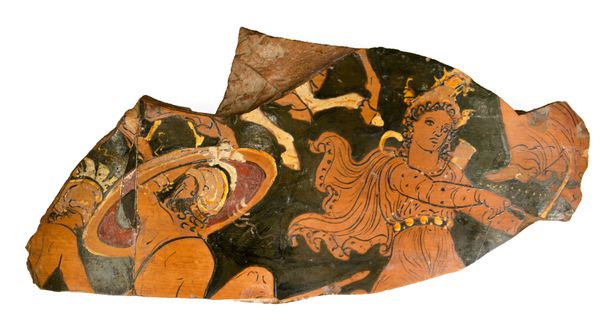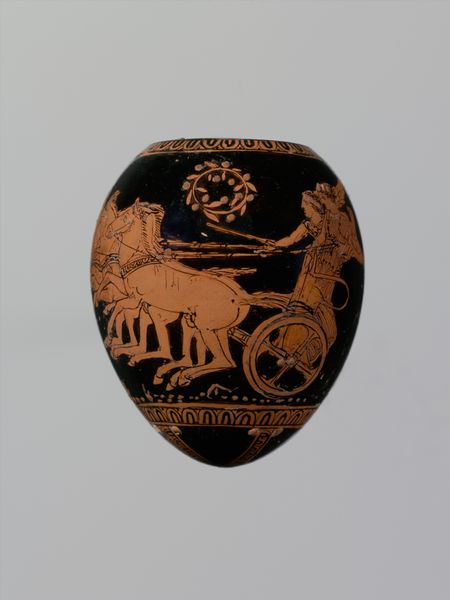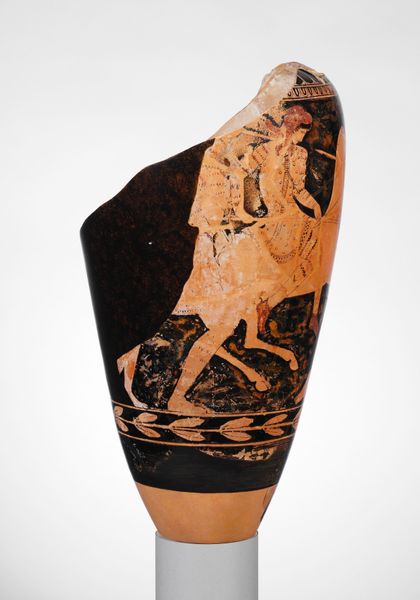
drawing, ceramic
#
portrait
#
drawing
#
greek-and-roman-art
#
caricature
#
ceramic
#
figuration
#
roman-art
#
ancient-mediterranean
#
genre-painting
Copyright: Public Domain
Curator: Here we have a terracotta rim fragment of a kylix, a drinking cup, dating back to 530 BC, and believed to be by the artist Makron. The piece is currently housed at the Metropolitan Museum of Art. What’s your initial take on this relic? Editor: It’s remarkably lively, isn’t it? Even in this fragmentary state, I feel pulled into some sort of domestic drama. There’s a tension, a touch – or is it a shove? It makes me wonder about the larger narrative that’s been lost to time. Curator: Consider how the material itself speaks to its function. This wasn't high art, meant for display in temples. It was part of everyday life, mass-produced pottery for drinking and socializing. The artistry is in the technique and the story it tells about the culture that produced and consumed it. Editor: Absolutely. And yet, within that everyday functionality, there’s such grace in the figures, especially in how their forms are defined against the black slip background. Almost minimalist. And I like how we, millennia later, are able to consider the complete form through only a piece of it, as a broken piece might tell us the meaning of a long lost memory. Curator: And observe the economy of line. This wasn’t some painstaking portrait but a standardized design, probably replicated many times. That speaks volumes about the commodification of art even in the ancient world. It reminds us that even art had a lifecycle, production, consumption, and eventual breakage. Editor: Though “breakage” feels so final. I see more of an unveiling – it offers me only a glimpse, a partial image that sets my own creative license alight as I reimagine what may have once existed within its entire form. But I do wonder, do you suppose that it had any significance to them in terms of its value, or was it just a cup used until it was broken? Curator: Probably both. It’s naive to separate function and significance. Think of how we imbue everyday objects with meaning—a favorite coffee mug, a worn-out tool. Editor: Point taken. This fragment becomes a vessel of stories, both about its creation and about our own interpretations. I see history refracted, memory salvaged and reshaped. What’s left becomes so much more in our eyes. Curator: A poignant reflection. The object becomes a signifier, a point of entry for examining a culture's artistic production, consumption habits, and social rituals. It makes us ask about the hands that made, held, and ultimately broke this object. Editor: And hopefully inspires other hands to reach across time and remake something meaningful too.
Comments
No comments
Be the first to comment and join the conversation on the ultimate creative platform.
